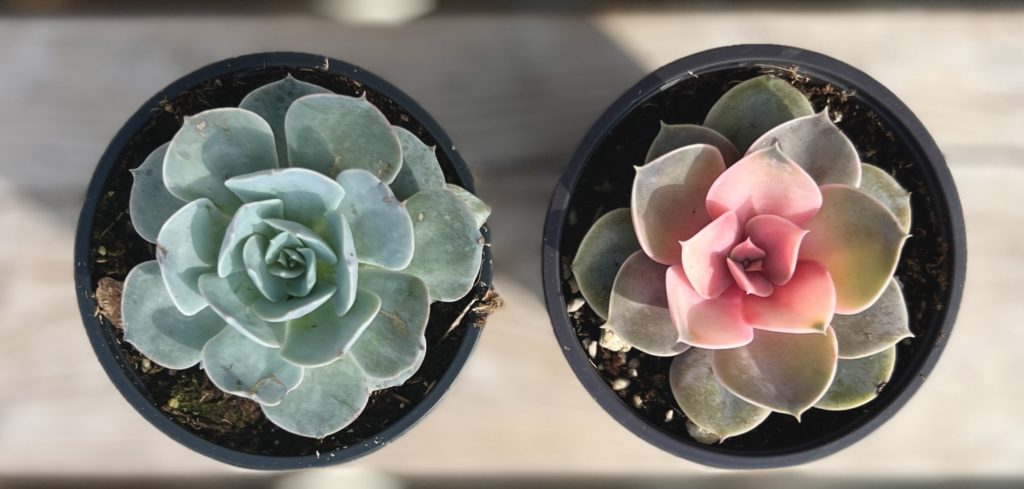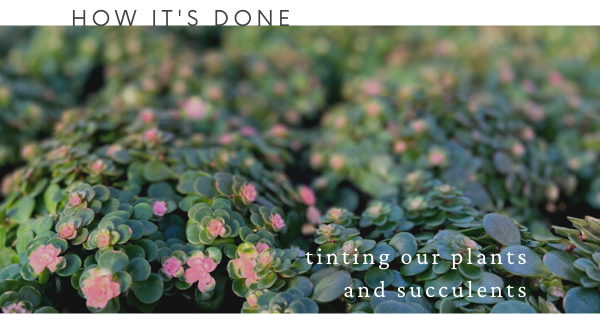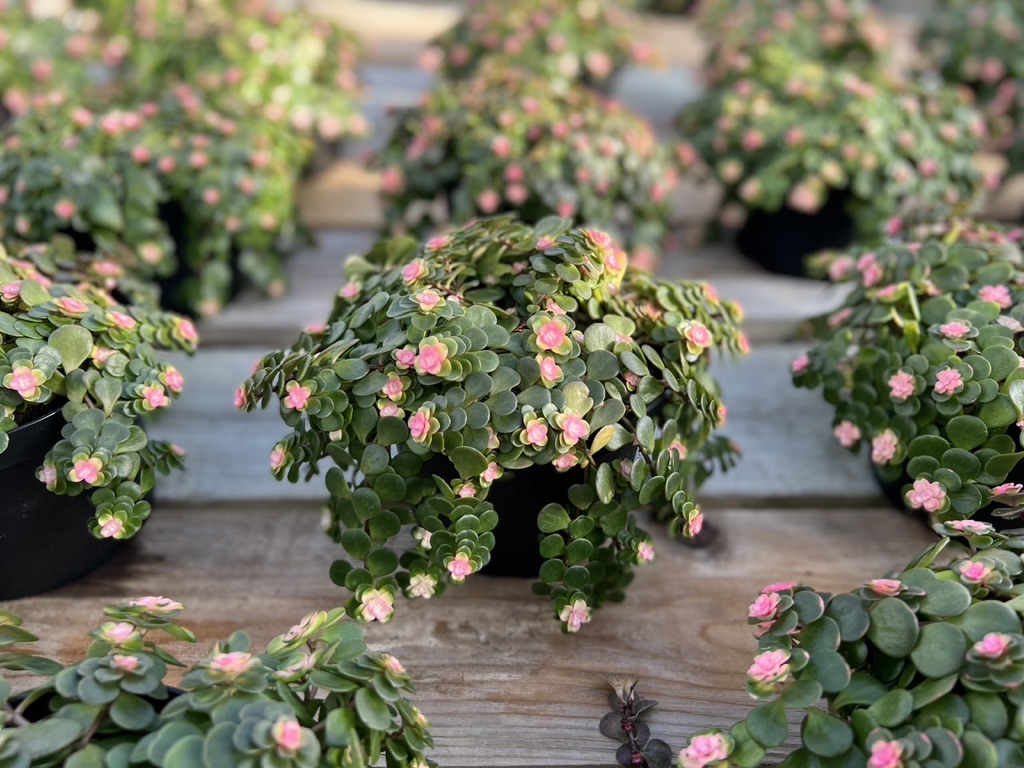Our innovative greenhouse growers are always finding new methods to provide our customers with one-of-a-kind products. Experimenting with unique growing techniques, one of our more colourful tests (and a customer favourite) has been developing and refining our tinting process for select sedum, succulents and plants. Learning about the tinting process from a valuable overseas trip a few years ago, it has been a unique opportunity to create innovative varieties in our seasonal growing program.
First, our plants are grown to a healthy and robust size before the treatment is applied. The mature plant is then carefully and evenly sprayed with a chlorophyl blocking compound inhibiting it from forming its primary chlorophyl colour cells in any of the newest, most active growth. This causes the plant to develop much lighter pigments then its original foliage colour, creating a beautiful contrast between the initial growth and the new tinted leaves. The lighter the initial hue of the plant is, the lighter the affected tissue will be.
On a green plant, like an Peperomia Amigo, the tint will be a pearl white colour. On a brown or grey plant, like a Pilea or Norfolk Silver, the new growth will change to a light rose pink.

A methodical process, the growth rates of the sprayed plants will slow dramatically, emphasizing the importance of growing them to full size before they are treated. In addition, the rate of the colour change will also be affected by the seasonal light intensity it is experiencing, ranging from a process completion of six weeks in the winter, to three weeks in the spring and summer.
We have had success experimenting with the colours of the Echeveria Pearl Von Numberg, Sedum Jade Runner, Peperomia Amigo, Pilea Norfolk, Pilea Silver Tree and Croton. Find them on our weekly plant catalog on our online ordering platform!


